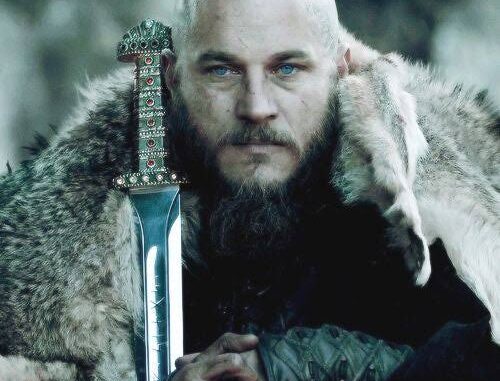
Long before his name was etched into the halls of Valhalla, Ragnar Lothbrok was merely a farmer—plowing the harsh, unforgiving land of Scandinavia with more grit than glory. But behind his quiet life was the mind of a man who dreamed beyond the soil and the sword. He believed that the Norse people were destined for more than survival; he saw a future carved from bold conquest, spiritual defiance, and a thirst for legacy. What began as a personal journey would soon ignite a cultural upheaval that stretched across seas and centuries.
Ragnar’s rise was not born out of royal blood, but through vision and cunning. When others clung to tradition, he looked to the unknown—questioning the gods, the kings, and the order of things. His unorthodox ideas, like sailing west to lands unknown, were mocked by many. But when he succeeded, leading raids to the shores of England, everything changed. He didn’t just prove the world was bigger—he proved the Viking spirit could redefine it.
His raids on Lindisfarne and Northumbria weren’t merely acts of pillaging; they were symbolic first strikes in a larger cultural war. Ragnar didn’t only bring fear to foreign lands—he brought awareness to his own people. He showed them that the Norse could be more than isolated tribes. They could be legends. His actions laid the groundwork for what would eventually become the Viking Age, a period that reshaped European history through blood, fire, and ambition.
But Ragnar was more than a warrior. His intelligence, curiosity, and deeply human flaws made him a complex figure—a man wrestling with faith, family, and fate. He challenged the gods, loved fiercely, and bore the weight of loss with a quiet torment. His relationship with Athelstan, a Christian monk turned confidant, revealed a rare vulnerability. In a world obsessed with strength, Ragnar dared to seek wisdom—and that made him dangerous in the eyes of both kings and priests.
His political ascent came with resistance. Rivals questioned his birthright, warriors envied his fame, and kings plotted behind closed doors. Still, Ragnar prevailed, crowned by the people not through bloodline, but by merit. As King of Kattegat, he transformed the port town into a thriving center of trade and influence. He united fractured clans, enforced a rule of vision over fear, and led with a charisma that inspired loyalty even among those who once opposed him.
Ragnar’s legacy was cemented not through endless victory, but through his final act of sacrifice. Captured by King Ælla of Northumbria, Ragnar met his death not with cries, but with prophecy—foretelling the vengeance of his sons. His execution by the blood eagle was brutal, but it was his final words that echoed across history. He became more than a man in that moment—he became a myth. And myths never die.
His sons, including Ivar the Boneless, Ubbe, and Bjorn Ironside, would go on to carry out Ragnar’s vision with relentless fury. Their campaigns of conquest were fueled not just by the desire for land or gold, but by the burden of honoring their father’s legend. Through them, Ragnar’s reach extended even further, leaving a footprint from England to the Mediterranean.
In modern storytelling, Ragnar has found new life, most notably through Travis Fimmel’s unforgettable portrayal in the series Vikings. The show captured the soul of the man behind the myth, introducing a new generation to the complexity and charisma that defined him. It wasn’t just entertainment—it was a resurrection. Ragnar was no longer just a figure in dusty sagas. He became real again.
Today, Ragnar Lothbrok stands as a symbol of ambition, rebellion, and transformation. His tale bridges the gap between man and myth, showing how one individual can shape the destiny of an entire culture. Historians still debate how much of Ragnar’s story is fact and how much is legend, but perhaps that’s beside the point. What matters is the fire he lit—the belief that greatness can come from unlikely beginnings.
Ragnar’s journey from the soil to the sword, from father to king, and finally to martyr, represents the very heart of Norse resilience. It’s the story of a man who defied limits—not just of geography, but of what his people believed possible. In doing so, he changed their fate forever.
Centuries later, his name is still whispered in stories, screamed in battle scenes, and etched into the very fabric of Viking identity. The world remembers Ragnar Lothbrok not because he asked to be remembered, but because his story demands it. His rise remains a testament to the eternal power of vision, courage, and the unrelenting pursuit of legacy.
And as long as there are those who sing of Odin, of fate, and of glory—the legend of Ragnar will never fade.

Leave a Reply